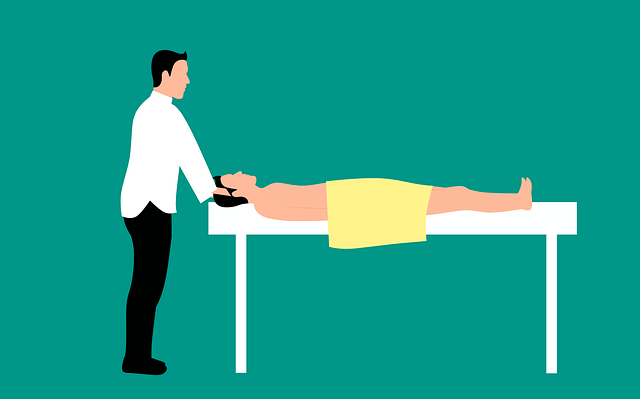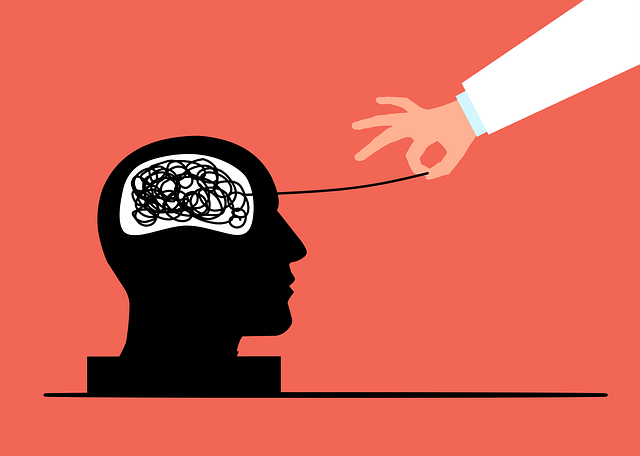Biofeedback therapy is a non-invasive, effective stress relief therapy that provides real-time feedback on physiological responses like heart rate and muscle tension, empowering individuals to consciously regulate these reactions for improved relaxation and overall well-being. Techniques include EEG, GSR, and HRV biofeedback, with sessions guiding patients through relaxation exercises. Preparing for your first session involves setting a positive mindset, resting, and avoiding caffeine. Biofeedback offers personalized stress management, enhances emotional resilience, and is safe when practiced by qualified professionals. Choosing an experienced, certified practitioner ensures optimal benefits.
“Unwind and reclaim your calm with Biofeedback Therapy, an effective stress relief solution. This comprehensive guide explores how this innovative approach can revolutionize your mental well-being. From understanding its fundamentals to uncovering diverse techniques, we demystify biofeedback’s power.
Discover the science behind it, its proven benefits, and practical tips for preparing and mastering sessions. Learn about various methods, potential considerations, and the importance of expert guidance when embarking on this journey towards reduced stress levels. Uncover a new you, balanced and resilient.”
Understanding Biofeedback Therapy for Stress Relief

Biofeedback therapy is a powerful tool for managing and overcoming stress, offering individuals a unique way to gain control over their bodies’ physical responses. This non-invasive approach allows people to learn how to relax and regulate their autonomic nervous system, which plays a significant role in our stress reactions. By providing real-time information about physiological changes, biofeedback enables individuals to make conscious adjustments to reduce tension and promote calmness.
The process typically involves using sensors to measure bodily functions like heart rate, skin conductance, and muscle tension. These signals are then fed back to the individual in a readable format, often through visual or auditory cues. This feedback helps people become more aware of their body’s stress response and teaches them to activate relaxation techniques on demand. With regular practice, biofeedback therapy for stress relief can lead to significant improvements in overall well-being and emotional resilience.
How Does Biofeedback Work?

Biofeedback is a powerful tool in the quest for stress relief therapy. It’s like listening to your body’s internal cues and learning to respond, rather than reacting instinctively. This non-invasive approach uses sensors to monitor physiological responses such as heart rate, muscle tension, and skin temperature. By providing real-time feedback on these changes, biofeedback allows individuals to consciously adjust their responses to stress.
Imagine knowing exactly what parts of your body are tense due to stress and being able to release that tension at will. This is the essence of biofeedback therapy. Through practice, people can learn to control these physical reactions, leading to improved relaxation and better management of stressful situations. It’s a form of mindfulness in motion, empowering individuals to take an active role in their mental health and overall well-being.
The Benefits of Biofeedback for Managing Stress

Biofeedback is a powerful tool in the arsenal against stress, offering a unique and highly effective approach to stress relief therapy. Through this process, individuals gain direct control over their physiological responses, allowing them to actively manage and reduce tension. By providing real-time feedback about bodily functions such as heart rate, muscle tension, and skin conductance, biofeedback enables people to recognize and modify their reactions to stressful situations.
One of the significant advantages of biofeedback for stress management is its ability to promote relaxation and calmness. As individuals learn to control their physiological responses, they can quickly de-escalate from stressful states, enhancing their overall well-being. This therapy also empowers people to become more aware of their bodies’ reactions, helping them identify triggers and develop healthier coping mechanisms. Over time, regular biofeedback sessions can lead to lasting changes in stress response patterns, providing individuals with valuable skills to navigate challenging situations with greater ease and resilience.
Different Types of Biofeedback Techniques

Biofeedback is a powerful tool for managing stress, offering a range of techniques to help individuals gain control over their physiological responses. The most common types include Electroencephalogram (EEG) biofeedback, which focuses on brainwave patterns to reduce anxiety and enhance relaxation, and Galvanic Skin Response (GSR) biofeedback, measuring skin conductivity to assess emotional states and guide stress relief therapy. Another technique is Heart Rate Variability (HRV) feedback, utilizing chest or wrist bands to monitor heart rate and provide real-time data for learning to regulate stress responses. Each method provides unique insights and strategies for achieving calmer, more balanced states.
Preparing for Your First Biofeedback Session

Preparing for your first biofeedback session is an important step in embarking on your journey towards effective stress relief therapy. Before your appointment, take some time to familiarize yourself with the process and set a positive mindset. Understand that biofeedback is a non-invasive technique that will teach you how to control certain bodily functions, empowering you to manage stress responses.
Ensure you arrive at the session well-rested and avoid consuming caffeine or any stimulants beforehand. Wear comfortable clothing that allows easy access to specific body areas where sensors will be placed. During the session, your therapist will guide you through relaxation exercises and provide real-time feedback on your physiological responses. Stay focused, breathe deeply, and try to let go of any tension or distractions.
During the Biofeedback Therapy Session

During a biofeedback therapy session, individuals learn to harness their body’s natural responses and gain control over physiological functions often associated with stress. This non-invasive approach involves real-time feedback from sensors placed on the skin, allowing patients to visualize and understand their bodily reactions. The process begins with relaxation techniques to prepare the mind and body, followed by monitoring of various physiological parameters such as heart rate, muscle tension, and skin conductance. Patients are guided through exercises designed to modify these responses, aiming to achieve a state of deep relaxation and stress relief.
Through this interactive experience, biofeedback enables individuals to correct imbalances and inefficiencies in their autonomic nervous system. As patients learn to consciously regulate their physiological reactions, they develop valuable tools for managing stress effectively. This personalized approach empowers folks to take control of their well-being, fostering a sense of agency over their mental and physical health.
Integrating Biofeedback into Your Stress Management Routine

Integrating biofeedback into your stress management routine can be a game-changer for effectively reducing and controlling stress levels. This non-invasive therapy empowers individuals by providing real-time feedback about their physiological responses, allowing them to consciously regulate these reactions. Through training sessions, you learn to recognize and modify body sensations associated with stress, enabling you to activate relaxation responses and promote mental calmness.
Regular biofeedback practice can enhance your overall well-being by improving emotional resilience and self-awareness. By consistently monitoring your progress, you can tailor stress management techniques to suit your unique needs, making it an invaluable tool for long-term stress relief therapy.
Potential Side Effects and Considerations

Biofeedback therapy for stress relief has shown promising results for many individuals, but it’s important to be aware of potential side effects and considerations. While generally safe when conducted by qualified professionals, some people may experience temporary adverse reactions. These can include feelings of anxiety, dizziness, headaches, or even mild depression immediately following a session. Such symptoms are usually fleeting and subside within a short period.
Another consideration is the cost and accessibility of biofeedback therapy. This form of treatment might not be covered by all insurance plans, and finding a qualified therapist who specializes in biofeedback can require additional effort and research. Moreover, for optimal results, consistency in sessions is crucial. Individuals must commit to regular participation to see meaningful improvements in stress management.
Finding a Qualified Biofeedback Practitioner

Finding a qualified biofeedback practitioner is an essential step in embarking on stress relief therapy. It’s crucial to seek someone with extensive training and experience in this specialized field. Look for practitioners certified by reputable organizations dedicated to biofeedback, ensuring they have the necessary skills to guide you through the process effectively. Reputable professionals will employ advanced techniques tailored to your unique needs, promoting relaxation and improving your overall well-being.
When searching for a practitioner, consider recommendations from healthcare providers or friends who have successfully utilized biofeedback therapy. Additionally, reviewing their qualifications, methods, and client testimonials can offer valuable insights. Choosing the right expert fosters a safe and supportive environment, enhancing the effectiveness of stress relief therapy and enabling you to unlock your body’s natural healing mechanisms.
